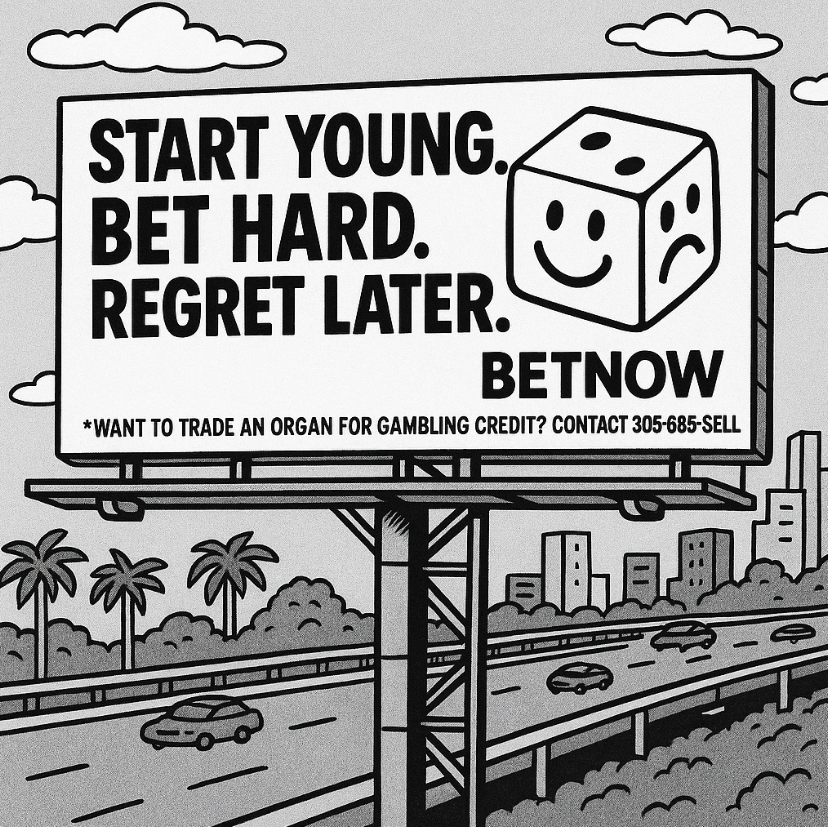Woke culture has ruined cartoons for generations with forced diversity and terrible remakes… or so I thought. That was the original purpose of this article: to lament the plague of forced ‘representation’ in recent animated movies and shows, which has morphed cartoons from entertainment into yet another space for activism. But then my mindset shifted when I actually watched some recent animated work, and when I realized just how much representation in cartoons matters.
Cartoons are the main form of media for kids, so they play a large role in introducing and shaping the definition of ‘normal.’ At Ransom Everglades, most of us were raised on cartoons. We grew up in what could be considered a golden age: “Total Drama Island,” “Teen Titans,” “X-Men,” and many others. Kids jump off their beds pretending to fly like Starfire or Storm. Kids want to fight bad guys like Slade and the Joker.
Kids want to be kids; they don’t understand how cartoons are affecting them. As Rowan Tolon ’24 reminisced on his childhood experience with cartoons, he said kids “don’t particularly focus on what [they] can get out of watching cartoons but rather on pure entertainment.”
Nevertheless, cartoons develop socialization skills, showing kids how to behave in a socially acceptable manner. How to treat others. Things like not asking a woman her age, speaking quietly in public spaces, or raising your hand to ask a question in class. What happens when a cartoon offers a limited perspective on who to be social with and how to be social with them? Kids aren’t thinking about it, but comparing their disabled friend to Captain Hook probably isn’t the best idea.
Kids constantly model their own behavior on what they see, and constantly look for connections between media representations and their own lives—even if they don’t realize it. After the premiere of “Moana,” Jordan James ’25 said “it was more other people who made that connection from me to the Disney princess, adding [her] onto me based on how I looked. than me actually resonating with her.” When she looks back, however, she sees the resonance.
This relationship between what kids see and what they believe, this process in which kids characteristics onscreen and immediately connect the dots, is where implicit bias comes into play. It is learned through experiences and associations between particular behaviors and social categories. The brain looks for information that confirms an individual’s bias and ignores information that contradicts it, and this process is heavily influenced by media portrayals of people and family dynamics. A study conducted by the American Bar Association that spanned 13 years showed that the more exposure people had to stigmatized groups, the more that their biases were challenged to such a degree that they began to fall away.
This is why media portrayals are so important. They shape the narratives that kids attach to their friends, the people around them, and themselves.
This is also why some common tropes and themes in media are problematic. The disabled villain trope falls into this category. Let’s talk about Mike from “Total Drama Island.” Mike is supposed to be a representative of dissociative identity disorder. Mike has multiple personalities, and they reveal themselves with different skillsets and key character traits throughout the cartoon. When Mike is first introduced to the show, he mentions his mental disorder to the audience, admitting that he’s afraid the disorder is ruining his life again and destroying his relationships.
This aspect of Mike’s character might be relatable to a lot of viewers with mental disorders, but a recent reappraisal on social media has put his character under a magnifying glass—and rightfully so. Mike has one particularly engaging personality: his name is Mal. He serves as the devil on Mike’s shoulder, ruining his life and trying to kill his friends. To alleviate this problem, Mike’s brain has a ‘reset’ button that gets rid of all his personalities, even the ones that didn’t cause him problems and unnecessary strain. People with mental disorders don’t have that option.
This representational choice matters. Kids are now given this narrative that D.I.D can make someone dangerous, and they have the option to make themselves “normal.” This is lazy writing to get to a quick resolution, but it is also irresponsible. Writers can’t introduce a character with that kind of identity without exploring it in depth. That lack of exploration is exactly what feels like forced diversity—where, as Tolon put it, “cartoons overstep and just kind of force representation.”
Representation can be done in a positive and affirming way. When I was younger, my 6’2” grandfather was “knocked down a peg,” as he put it—literally. He lost his leg when I was around eight or nine years old. To me, it wasn’t a big deal, but for the rest of my family, I couldn’t say the same.
When my grandfather was first discharged from the hospital, I was ecstatic to see him, waiting for him to pick me up like always, but it was different this time. I had to walk up to him for the rest of my life, not even expecting him to meet me in the middle. My cousins were screaming and crying, scared to even come near my grandfather.
That was the first time most of them had seen an amputee. And it made me realize that, in all my years of watching cartoons, I hadn’t seen one either—until I watched a newer Netflix original series called “Mech Cadets.” There is this one charismatic character who loves to play soccer and flies an alien robot. He is also missing a leg. His character is likable, and all his personality traits and motivations could be attached to any character. That is what proper representation is. Characters that just happen to be a part of a marginalized group, but their character has little to nothing to do with that. They’re ‘normal’ like everyone else—included in the definition of ‘normal’ that the show creates.
Cartoons don’t replace parents, and they shouldn’t have to. As History and Social Sciences teacher Dr. Brandon King put it, “I think ultimately it needs to be more on us as audience members to be intelligent consumers, rather than on the artist to represent everything.” Even so, cartoons reflect the world, and the world is filled with misconceptions and stereotypes. And both creators and consumers have more of an ability to change that reality, to combat ignorance with profound intelligence, than they think they do.
Cartoons have always been a form of activism. Cartoons are art. Art has the power to comfort the disturbed and disturb the comfortable. We can only hope that cartoons will continue to do that by exposing kids to more narratives that expand and challenge their definition of ‘normal,’ promoting pride in diversity and unity.












